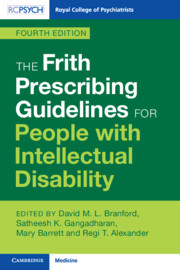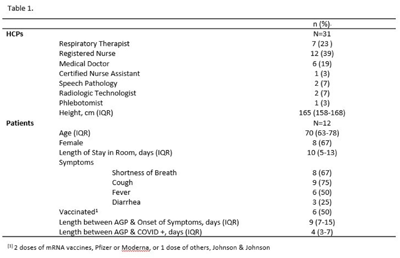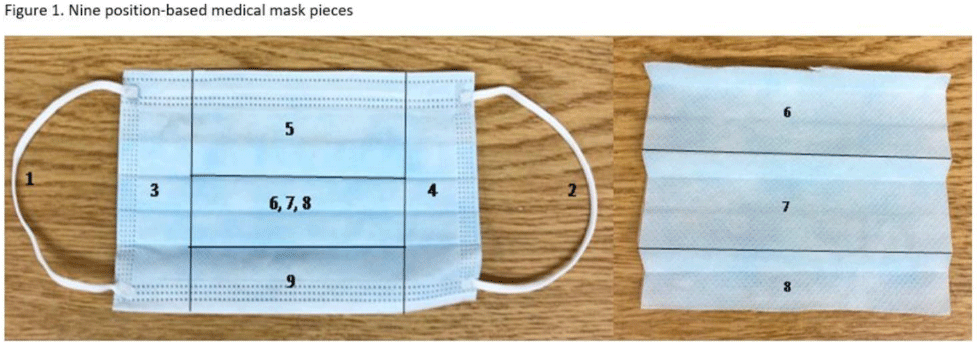92 results

The Frith Prescribing Guidelines for People with Intellectual Disability
- Coming soon
-
- Expected online publication date:
- November 2024
- Print publication:
- 30 November 2024
-
- Book
- Export citation
Mainstreaming equality and human rights: Factors that inhibit and facilitate implementation in regulators, inspectorates and ombuds in England and Wales
-
- Journal:
- International Journal of Law in Context / Volume 20 / Issue 2 / June 2024
- Published online by Cambridge University Press:
- 08 January 2024, pp. 204-228
-
- Article
-
- You have access
- Open access
- HTML
- Export citation
3 The Relationship Between Apolipoprotein-E4 Genotype, Memory, and the Medial Temporal Lobe and How These Relationships Vary by Race in Middle-Aged Persons with HIV
-
- Journal:
- Journal of the International Neuropsychological Society / Volume 29 / Issue s1 / November 2023
- Published online by Cambridge University Press:
- 21 December 2023, pp. 683-684
-
- Article
-
- You have access
- Export citation
Chapter 18 - Information-Sharing, Including With Victims of Crime Committed by Persons With Mental Disorders
- from Section 5 - Violence and Society
-
-
- Book:
- The Prevention and Management of Violence
- Published online:
- 09 May 2023
- Print publication:
- 11 May 2023, pp 286-299
-
- Chapter
- Export citation
Chapter 15 - Adrenal Disease in Pregnancy
- from Section II - Hormones and Gestational Disorders
-
-
- Book:
- Hormones and Pregnancy
- Published online:
- 09 November 2022
- Print publication:
- 13 October 2022, pp 164-182
-
- Chapter
- Export citation
Correlative Micro-CT and FIB-SEM Tomography for Refined Macro-scale Pore Volume Measurements in TPBAR LiAlO2 Pellets
-
- Journal:
- Microscopy and Microanalysis / Volume 28 / Issue S1 / August 2022
- Published online by Cambridge University Press:
- 22 July 2022, pp. 2098-2099
- Print publication:
- August 2022
-
- Article
-
- You have access
- Export citation
SARS-CoV-2 N95 contamination worn under a face shield, via medical mask surrogate, in healthcare providers treating COVID-19
-
- Journal:
- Antimicrobial Stewardship & Healthcare Epidemiology / Volume 2 / Issue S1 / July 2022
- Published online by Cambridge University Press:
- 16 May 2022, pp. s37-s38
-
- Article
-
- You have access
- Open access
- Export citation
‘Contact’ Rock Art and the Hybrid Economy Model: Interpreting Introduced Subject Matter from Marra Country, Southwest Gulf of Carpentaria, Northern Australia
-
- Journal:
- Cambridge Archaeological Journal / Volume 32 / Issue 4 / November 2022
- Published online by Cambridge University Press:
- 29 March 2022, pp. 527-546
- Print publication:
- November 2022
-
- Article
-
- You have access
- Open access
- HTML
- Export citation
III - Kleptocracy and State Capture
-
- Book:
- Understanding Corruption
- Published by:
- Agenda Publishing
- Published online:
- 20 January 2024
- Print publication:
- 03 March 2022, pp 111-112
-
- Chapter
- Export citation
V - Conclusion
-
- Book:
- Understanding Corruption
- Published by:
- Agenda Publishing
- Published online:
- 20 January 2024
- Print publication:
- 03 March 2022, pp 221-222
-
- Chapter
- Export citation
Contents
-
- Book:
- Understanding Corruption
- Published by:
- Agenda Publishing
- Published online:
- 20 January 2024
- Print publication:
- 03 March 2022, pp v-viii
-
- Chapter
- Export citation
Frontmatter
-
- Book:
- Understanding Corruption
- Published by:
- Agenda Publishing
- Published online:
- 20 January 2024
- Print publication:
- 03 March 2022, pp i-iv
-
- Chapter
- Export citation
II - Political Corruption
-
- Book:
- Understanding Corruption
- Published by:
- Agenda Publishing
- Published online:
- 20 January 2024
- Print publication:
- 03 March 2022, pp 57-58
-
- Chapter
- Export citation
Index
-
- Book:
- Understanding Corruption
- Published by:
- Agenda Publishing
- Published online:
- 20 January 2024
- Print publication:
- 03 March 2022, pp 251-263
-
- Chapter
- Export citation
12 - Corrupt Capital Case Studies
-
- Book:
- Understanding Corruption
- Published by:
- Agenda Publishing
- Published online:
- 20 January 2024
- Print publication:
- 03 March 2022, pp 177-216
-
- Chapter
- Export citation
Acknowledgements
-
- Book:
- Understanding Corruption
- Published by:
- Agenda Publishing
- Published online:
- 20 January 2024
- Print publication:
- 03 March 2022, pp xi-xii
-
- Chapter
- Export citation
9 - Kleptocracy and State Capture Case Studies
-
- Book:
- Understanding Corruption
- Published by:
- Agenda Publishing
- Published online:
- 20 January 2024
- Print publication:
- 03 March 2022, pp 121-158
-
- Chapter
- Export citation
IV - Corrupt Capital
-
- Book:
- Understanding Corruption
- Published by:
- Agenda Publishing
- Published online:
- 20 January 2024
- Print publication:
- 03 March 2022, pp 167-168
-
- Chapter
- Export citation
Preface
-
- Book:
- Understanding Corruption
- Published by:
- Agenda Publishing
- Published online:
- 20 January 2024
- Print publication:
- 03 March 2022, pp ix-x
-
- Chapter
- Export citation
Contributors
-
- Book:
- Understanding Corruption
- Published by:
- Agenda Publishing
- Published online:
- 20 January 2024
- Print publication:
- 03 March 2022, pp xiii-xvi
-
- Chapter
- Export citation



